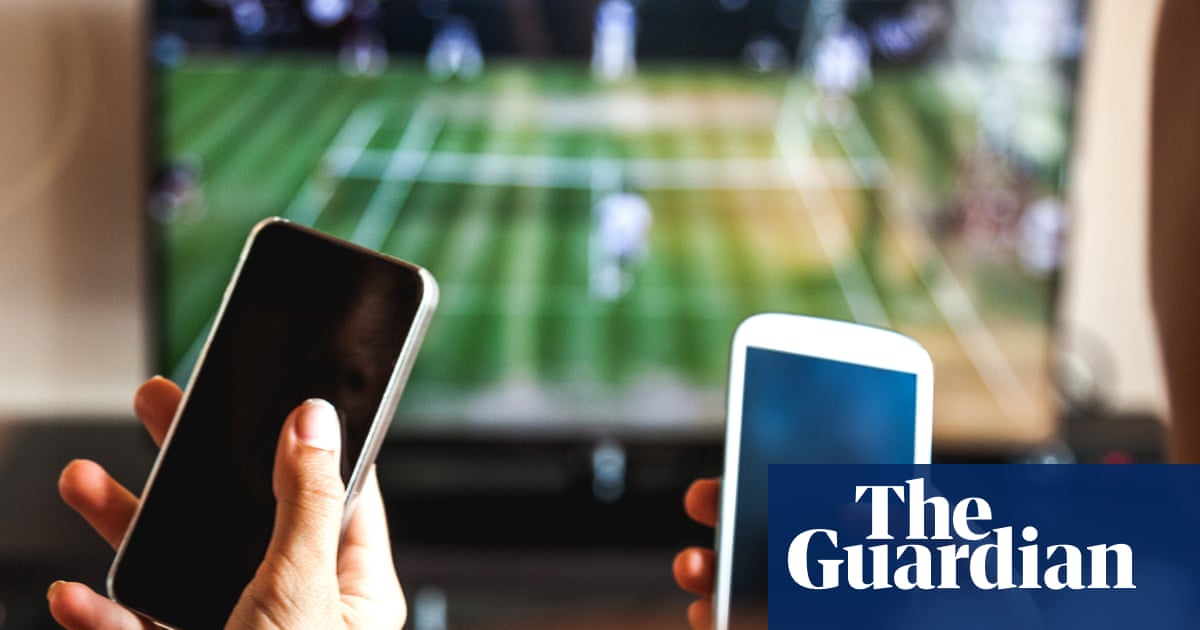The amount of time adults in Great Britain spend using their mobile phones has finally overtaken that spent watching TV, according to a report that calculates the daily average for watching all types of screen is now almost 7.5 hours.
For the first time a typical person aged 15 or over spends longer each day on their mobile (three hours and 21 minutes) than on watching a traditional set (three hours and 16 minutes), the annual TouchPoints survey found.
This tipping point has been driven by a steady rise in mobile phone usage over the past decade, which has almost tripled from one hour and 17 minutes a day. TV set viewing has remained relatively stable with the average amount of daily viewing just a little longer in 2015 at three hours and 23 minutes.
The research, which is published by the Institute of Practitioners in Advertising (IPA), assesses that over-15s spend on average 7.5 hours a day engaged in screen-based activities – including using mobiles, laptops, tablets, games consoles and watching TV – up from 6.5 hours a decade ago.
The survey’s findings also highlight the “always on” nature of mobile consumption.
TV set viewing shows peak viewing in evenings, while computer use aligns with the traditional 9-5 workday. However, mobile phone usage remains consistently high from morning until bedtime, suggesting that handsets are now the most constant media companion.
“This data marks a milestone in the evolution of media consumption,” said Dan Flynn, the deputy research director at the IPA, which has been running the TouchPoints survey since 2005. “It’s a clear signal of how embedded mobile phones have become in our daily lives. Always on, always within reach and increasingly central to how we consume content, connect and unwind.”
The survey shows the dramatic shift in the habits of younger people, with research by media regulator Ofcom last year finding thatless than half of young people watch any live television in an average week.
Younger generations have been increasingly drawn to watching streaming platforms such as YouTube, TikTok and Netflix on mobile, as well as scrolling social media platforms including Instagram and Facebook, rather than choosing to sit down in front of traditional TV.
The latest TouchPoints survey, which polled 6,416 people over 15, found that the youngest cohort aged up to 24 now spends four hours 49 minutes on their mobile phones, almost 50% more time than the overall average. This demographic also spends just one hour 49 minutes watching traditional TV.
Sign up toBusiness Today
Get set for the working day – we'll point you to all the business news and analysis you need every morning
after newsletter promotion
“The data doesn’t just confirm that mobiles are now the dominant screen in our lives, it also underscores how rapidly our media habits are evolving,” said Denise Turner, the incoming IPA research director.
The data also tracks the emotions and feelings of participants as well as their daily media consumption routines, highlights some of theincreasing concerns relating to contenton internet-based platforms.
Viewers were 55% more likely to report feeling sad when watching video on a mobile phone compared with a TV set.
Similarly, British adults reported being 52% more likely to feel relaxed when watching traditional TV compared with viewing video on a mobile phone.
“We watch TVs and use mobile phones for very different reasons,” said Lindsey Clay, the chief executive of the TV industry body Thinkbox. “What’s chilling is that much mobile time is spent on toxic social media, fuelling the youth mental health crisis and disengagement with trusted news. As the IPA study notes, TV creates positive feelings, mobile the opposite.”
The survey found that browsing social media and sending messages accounted for the biggest proportion of time spent on mobiles, at 49%. This was followed by radio and audio services, at 20%, and watching TV and video at 15%.
